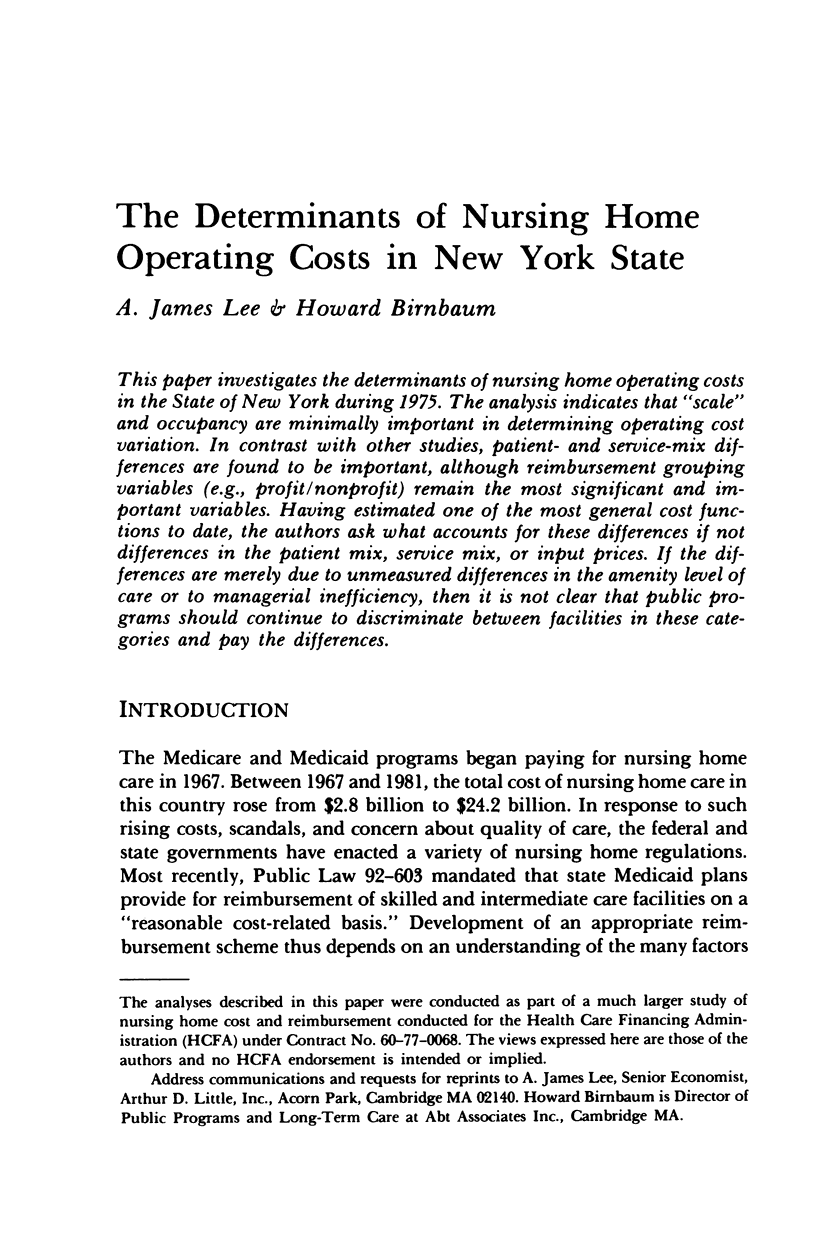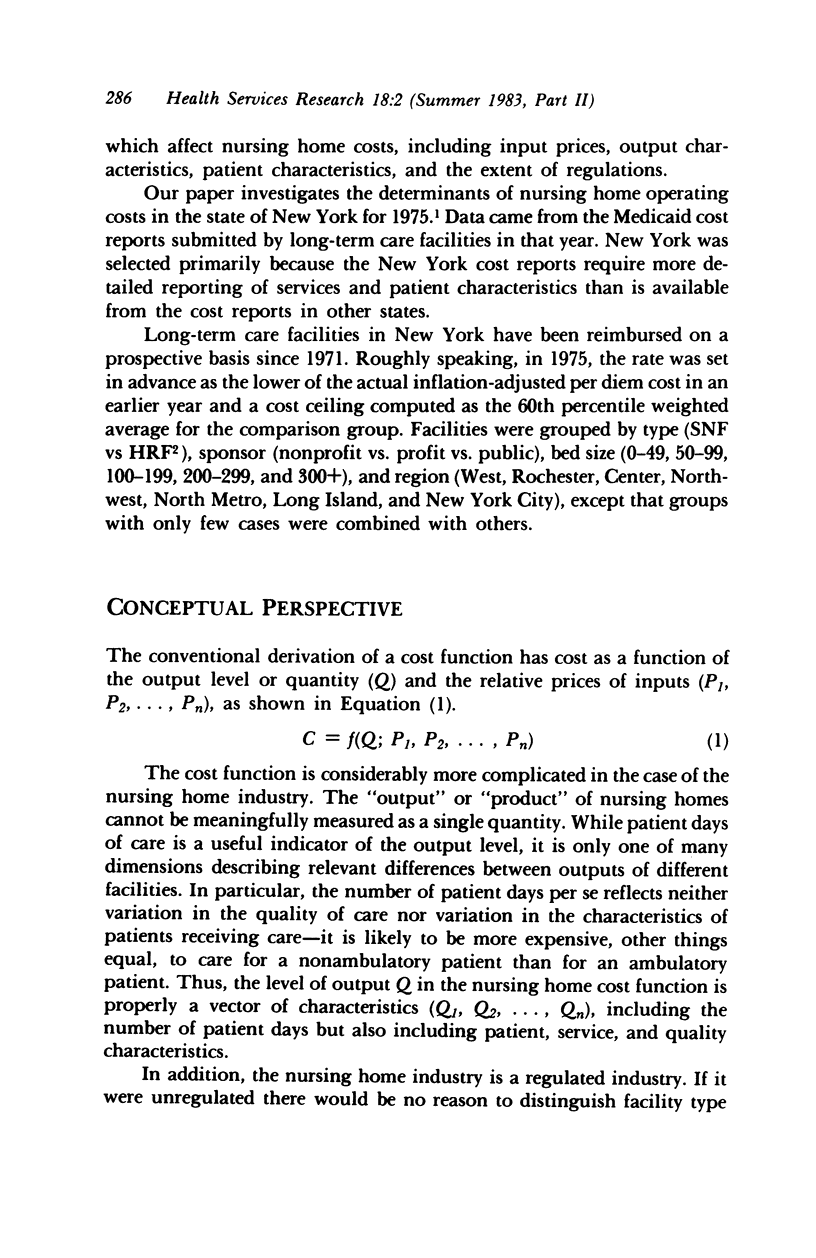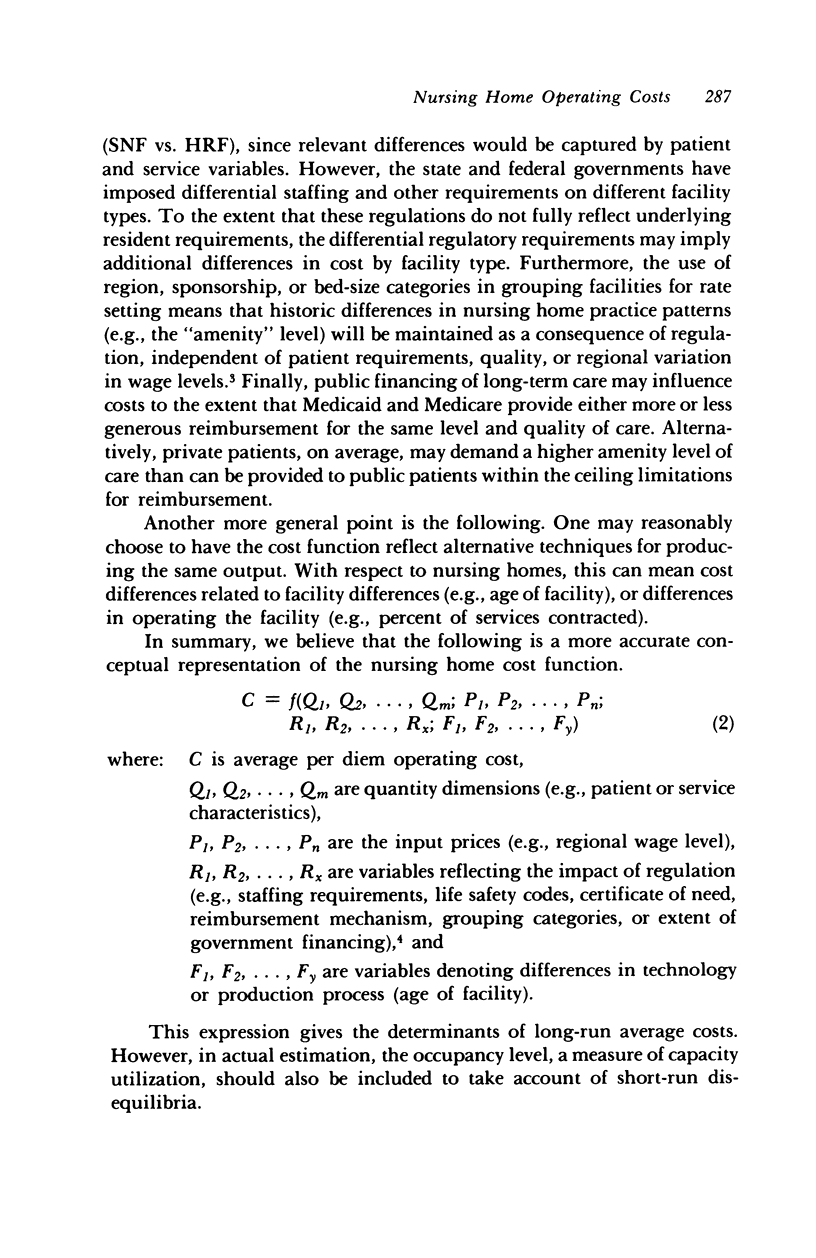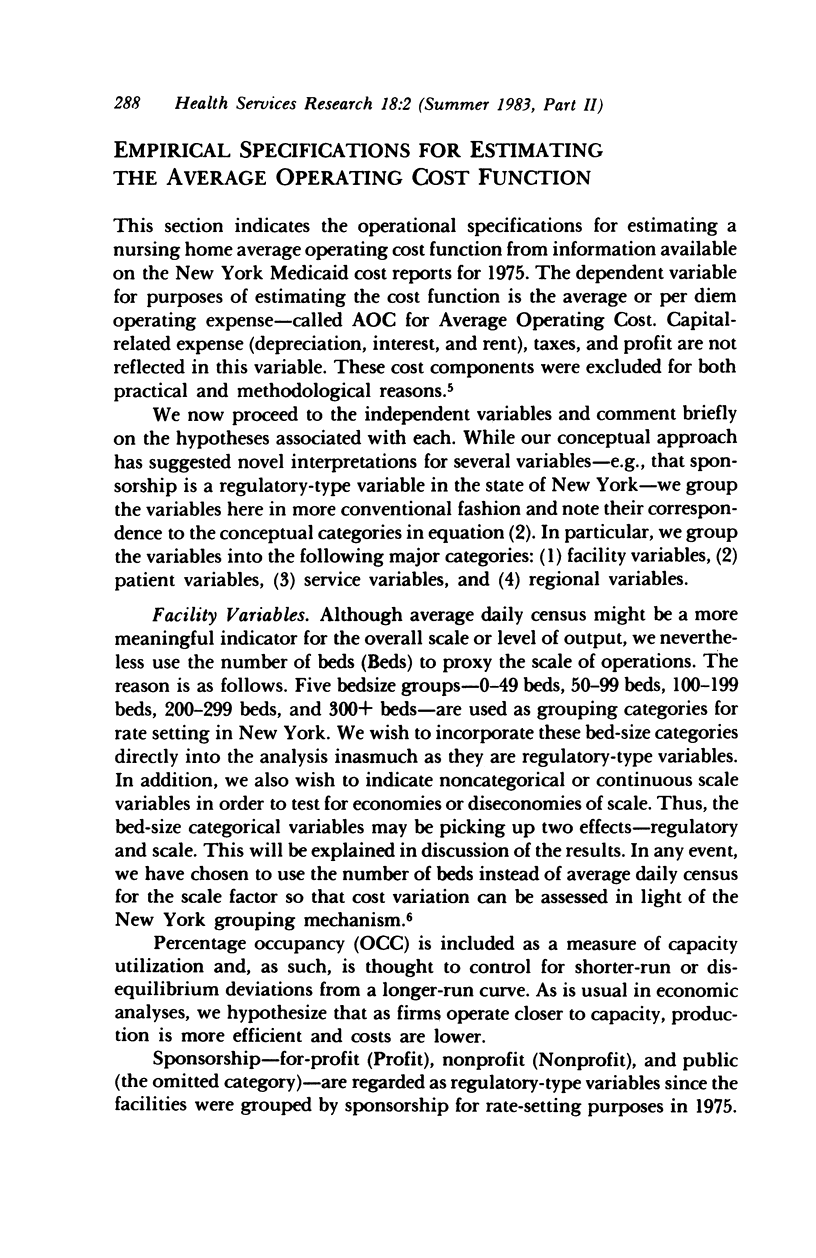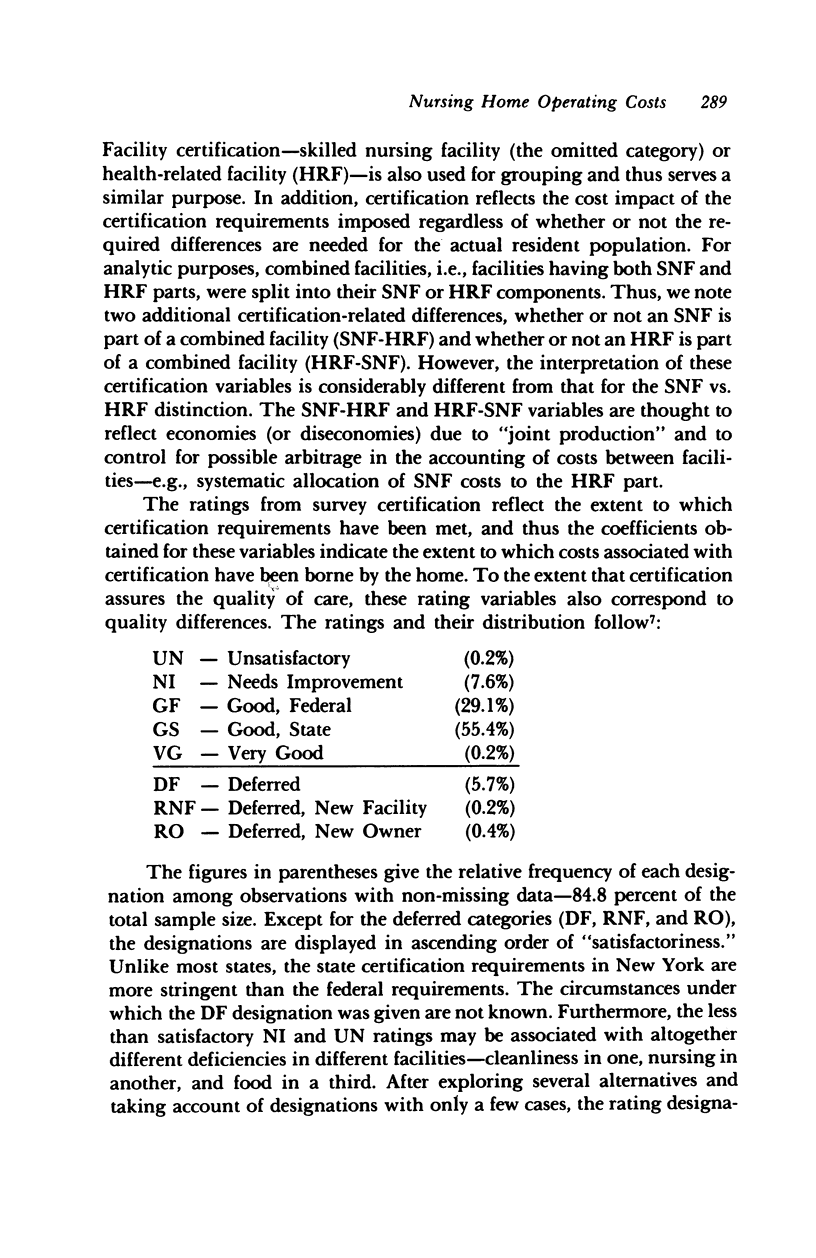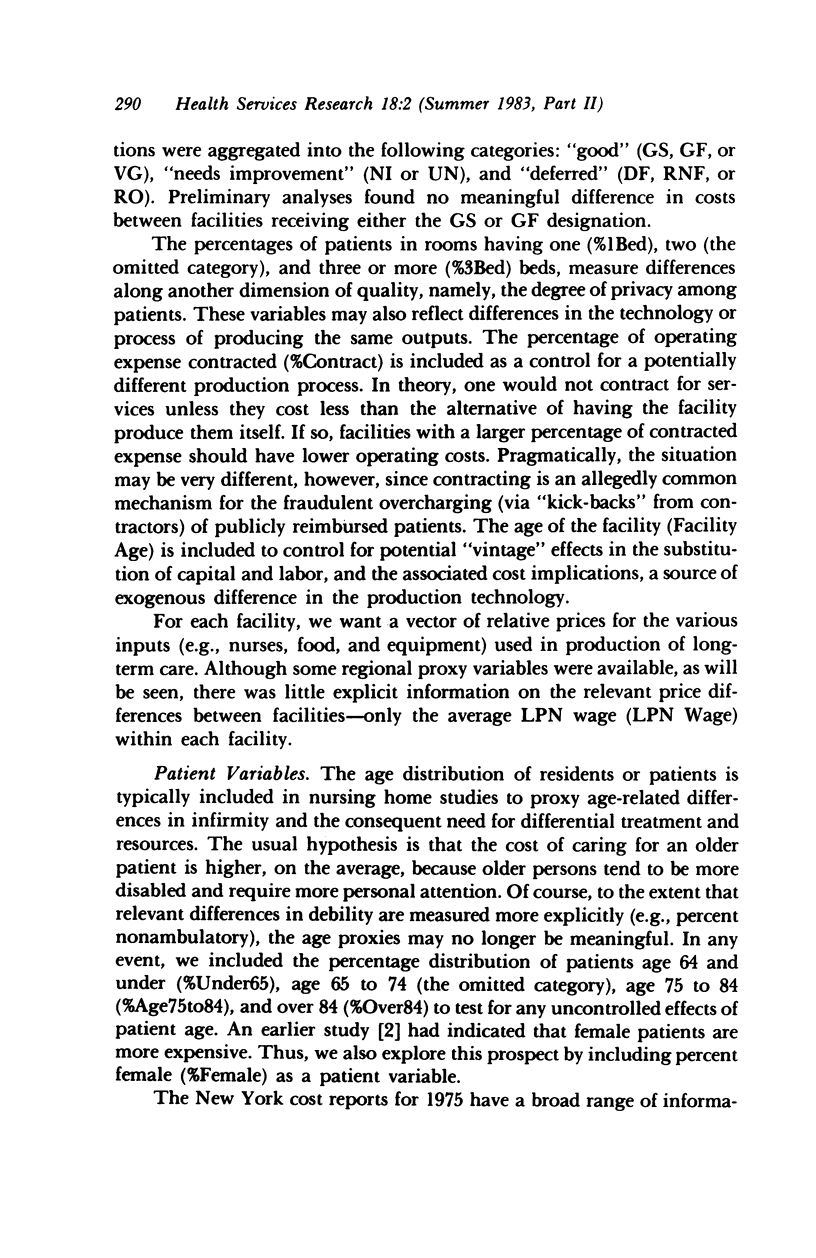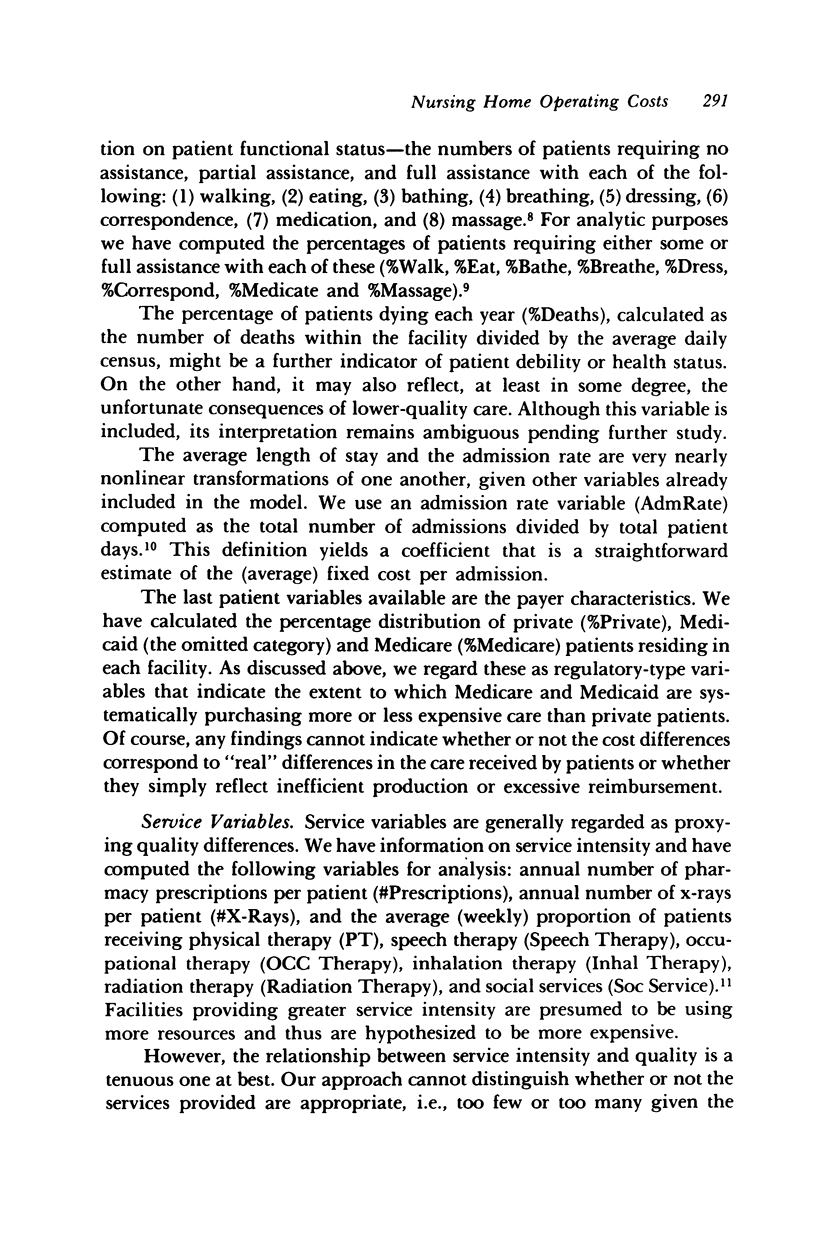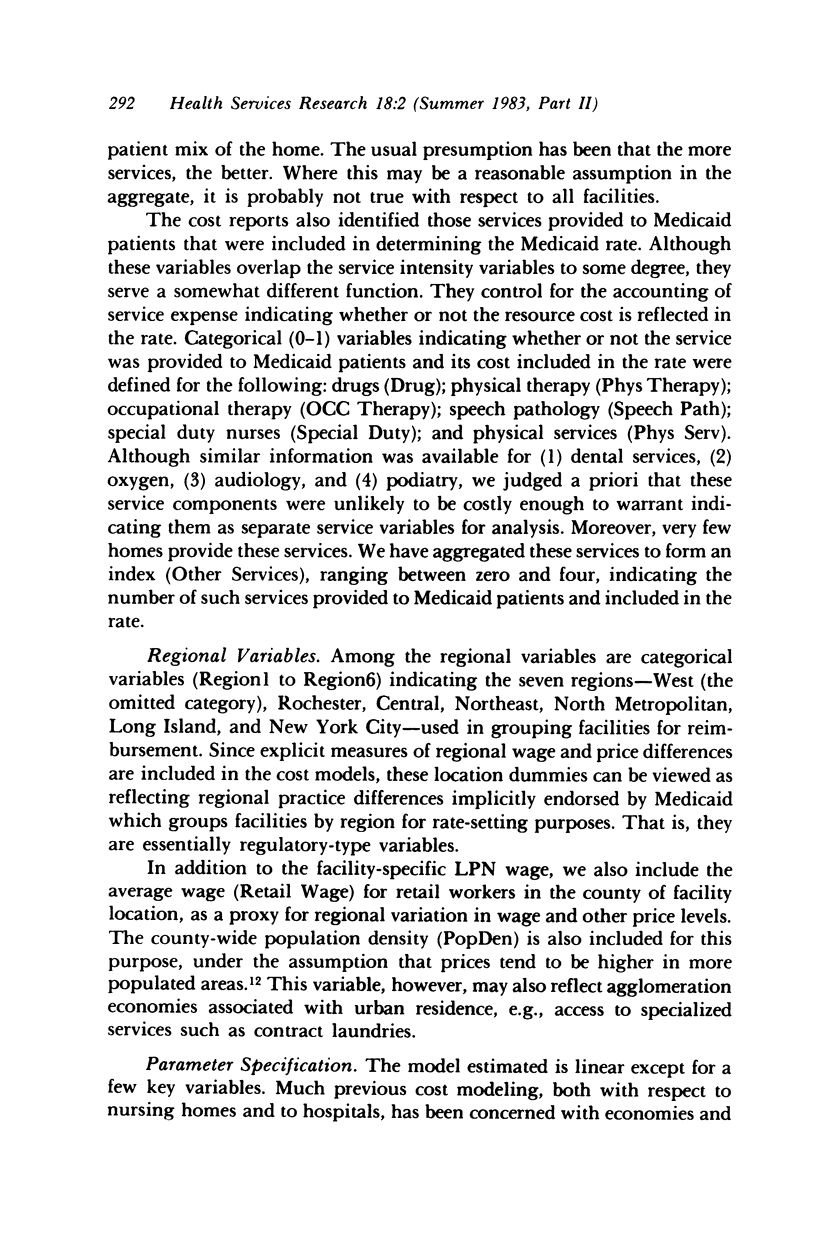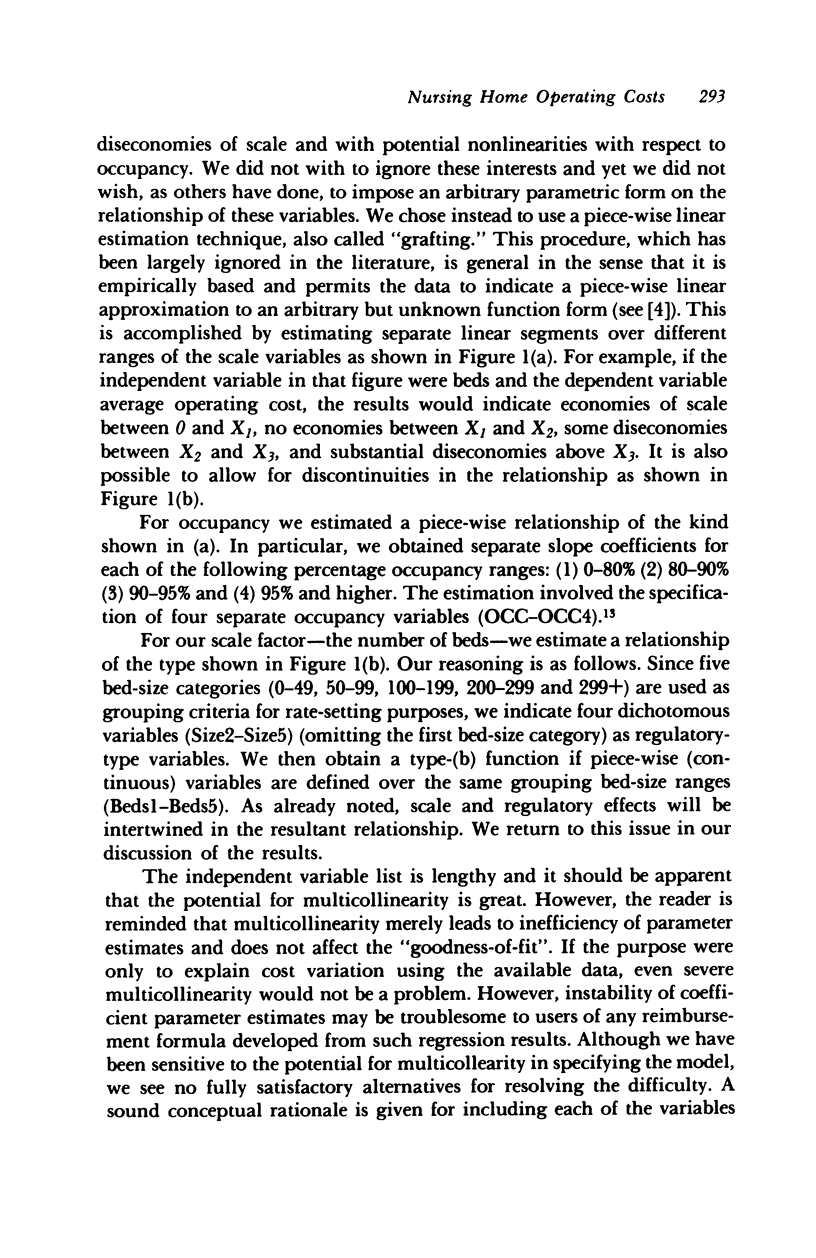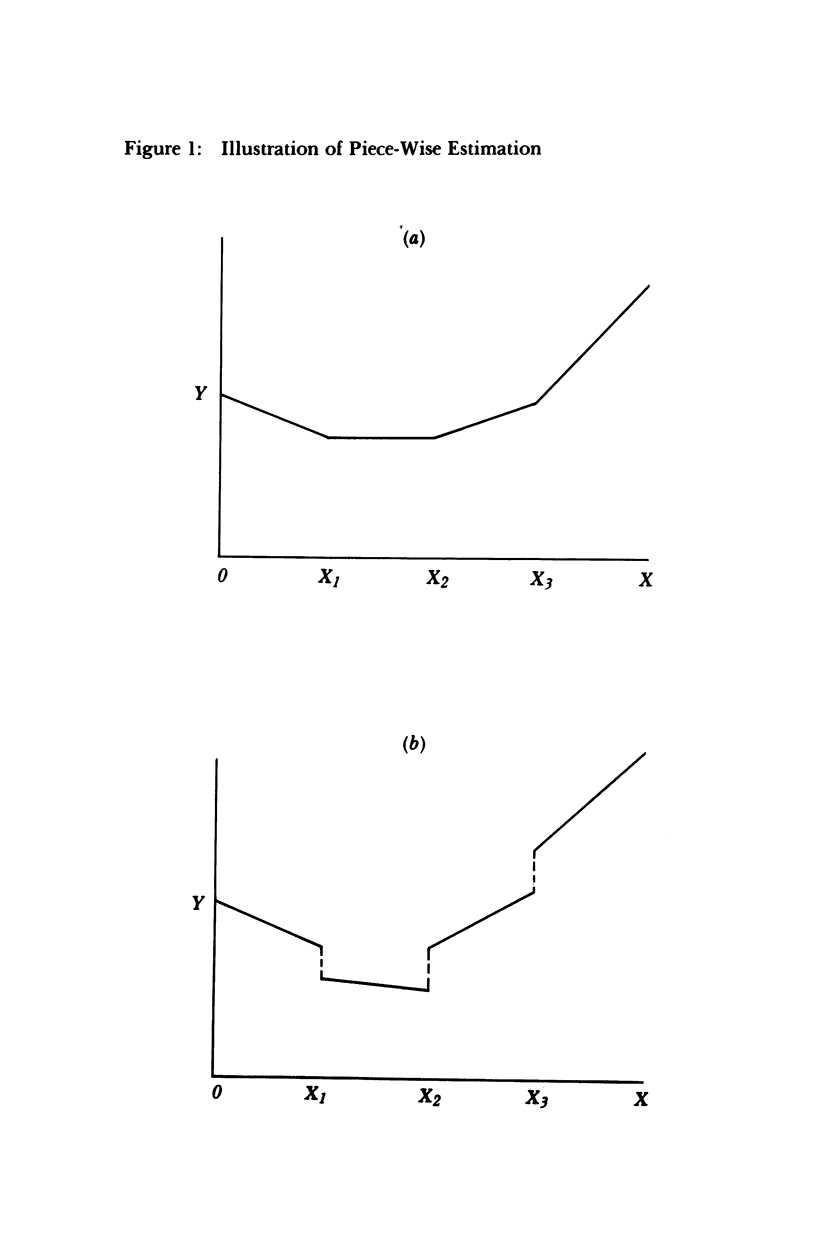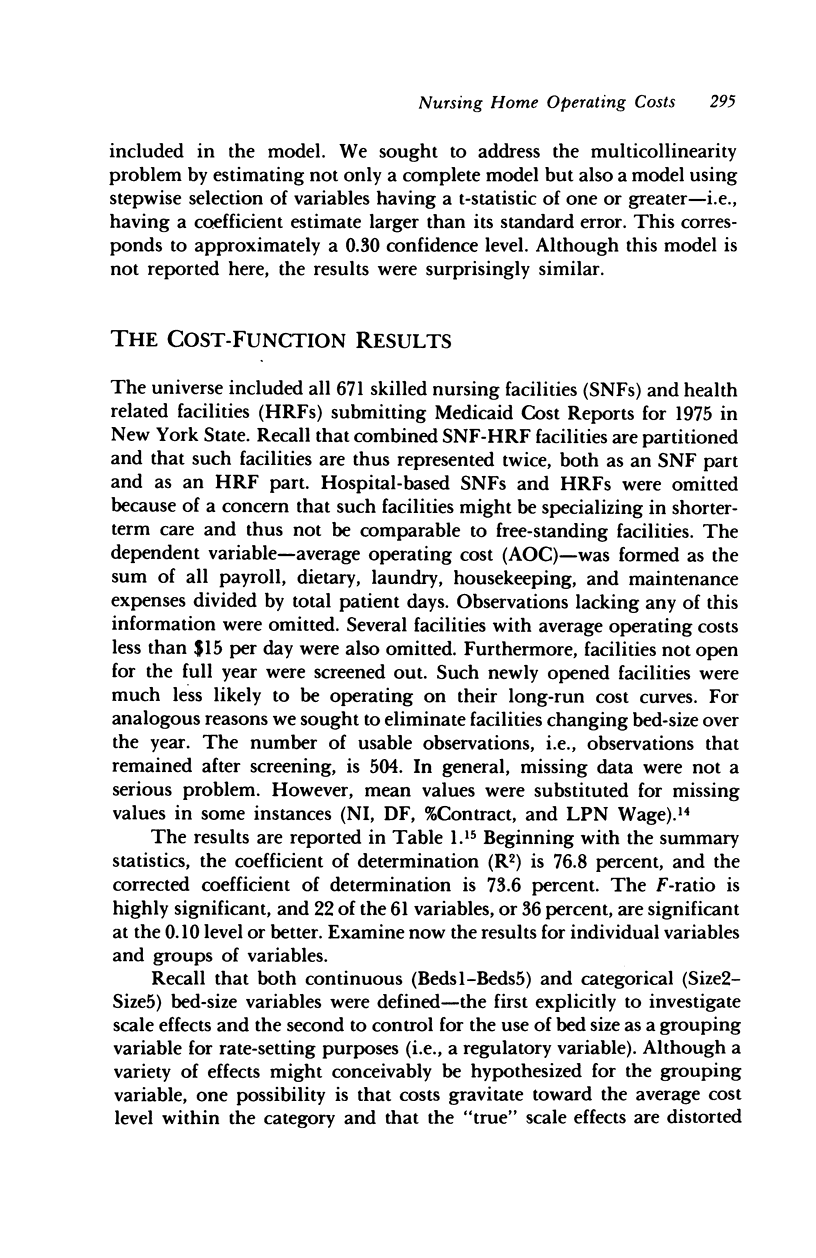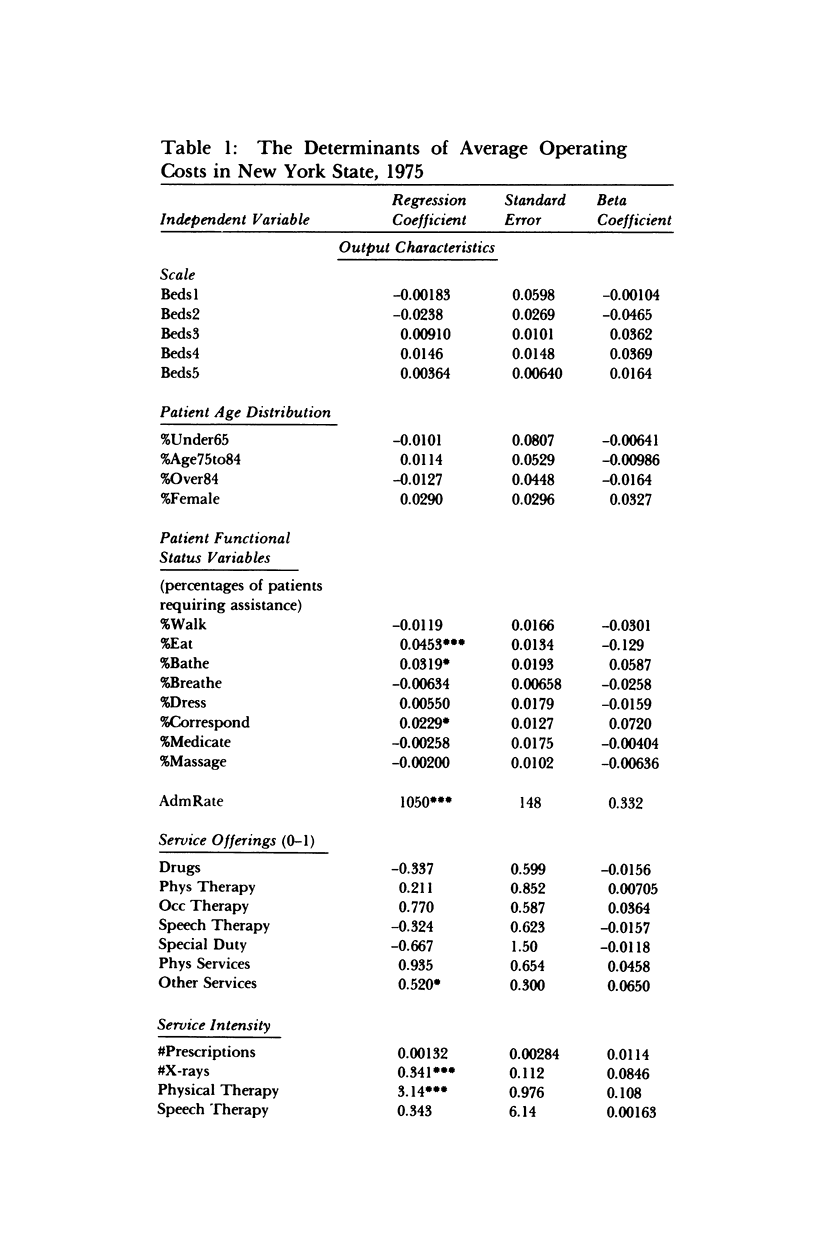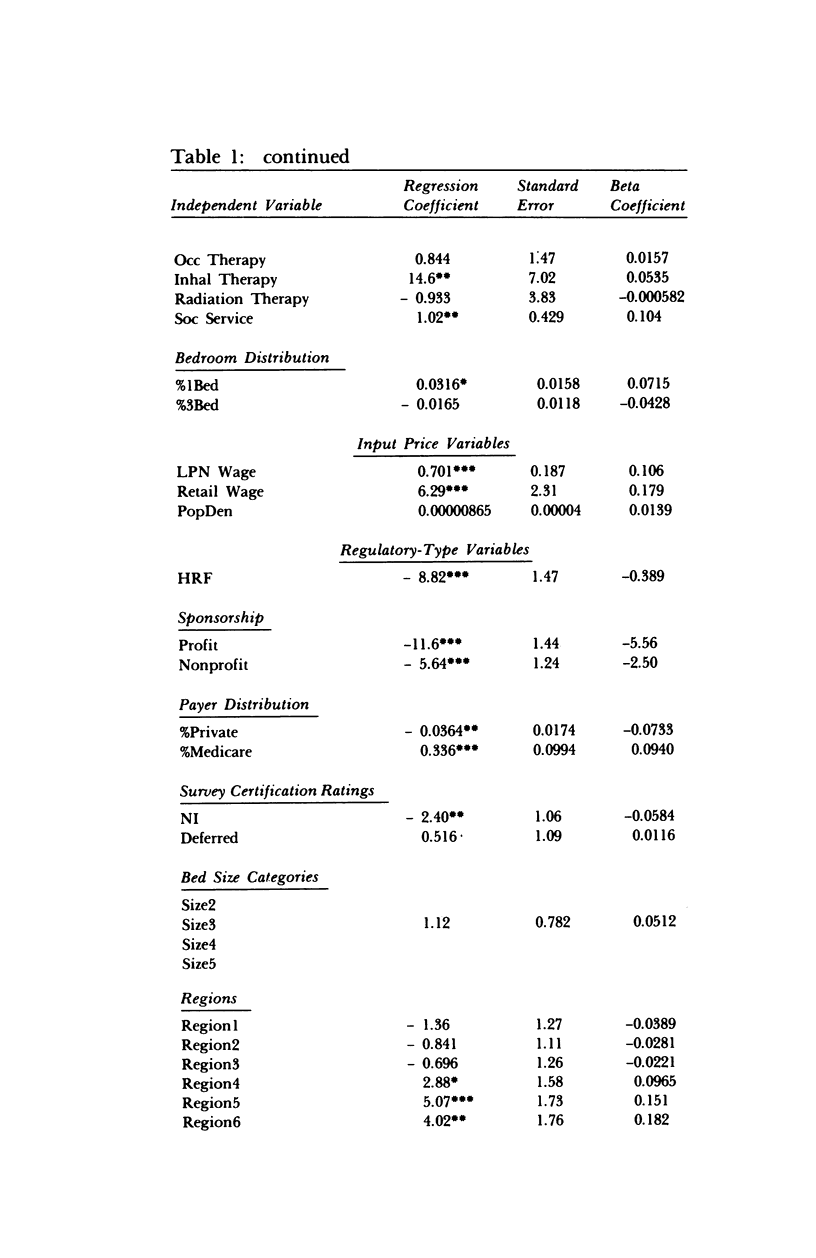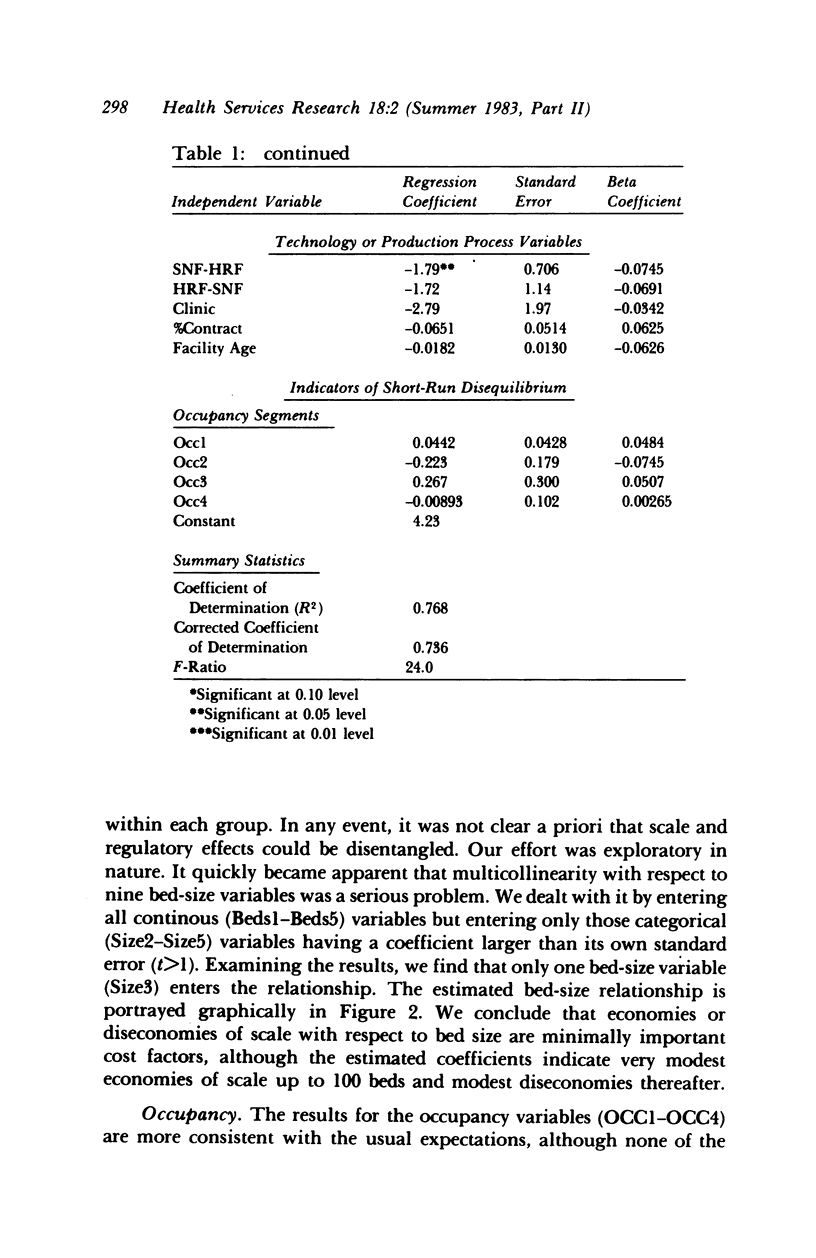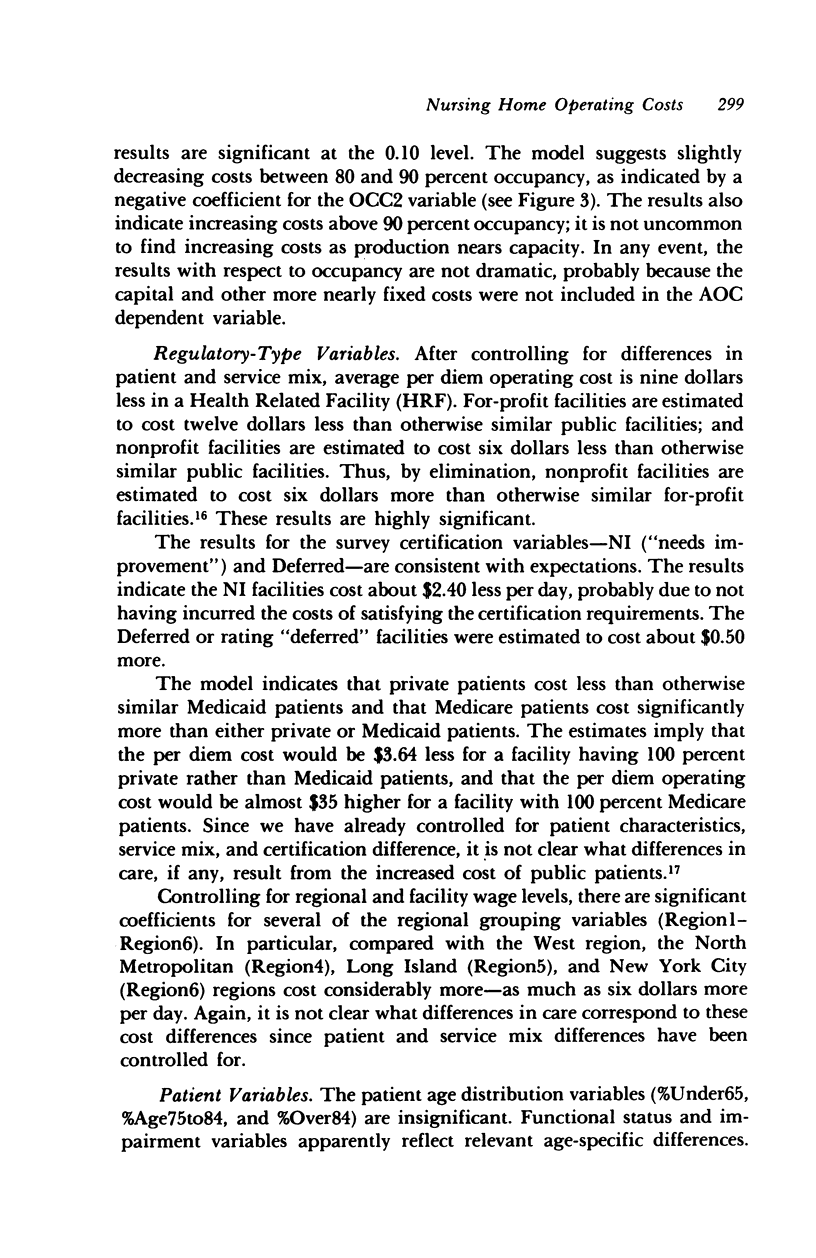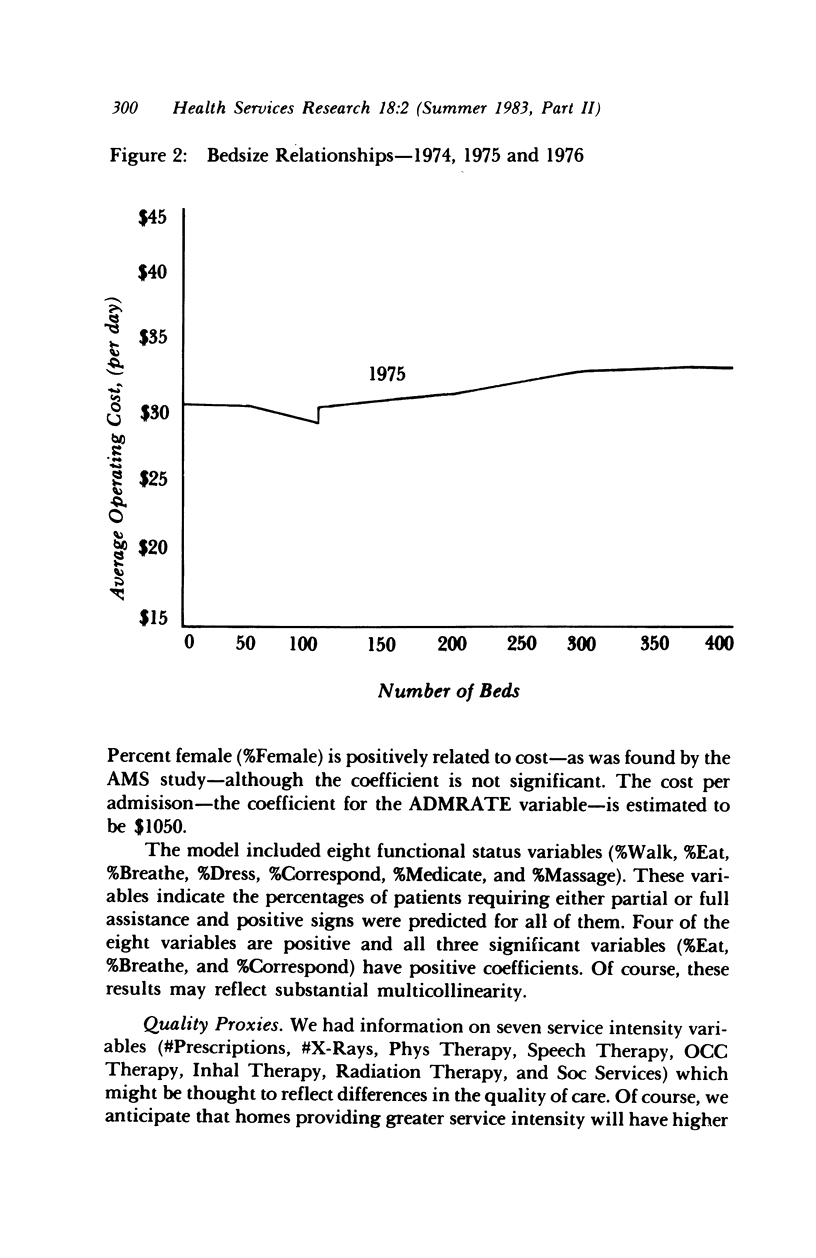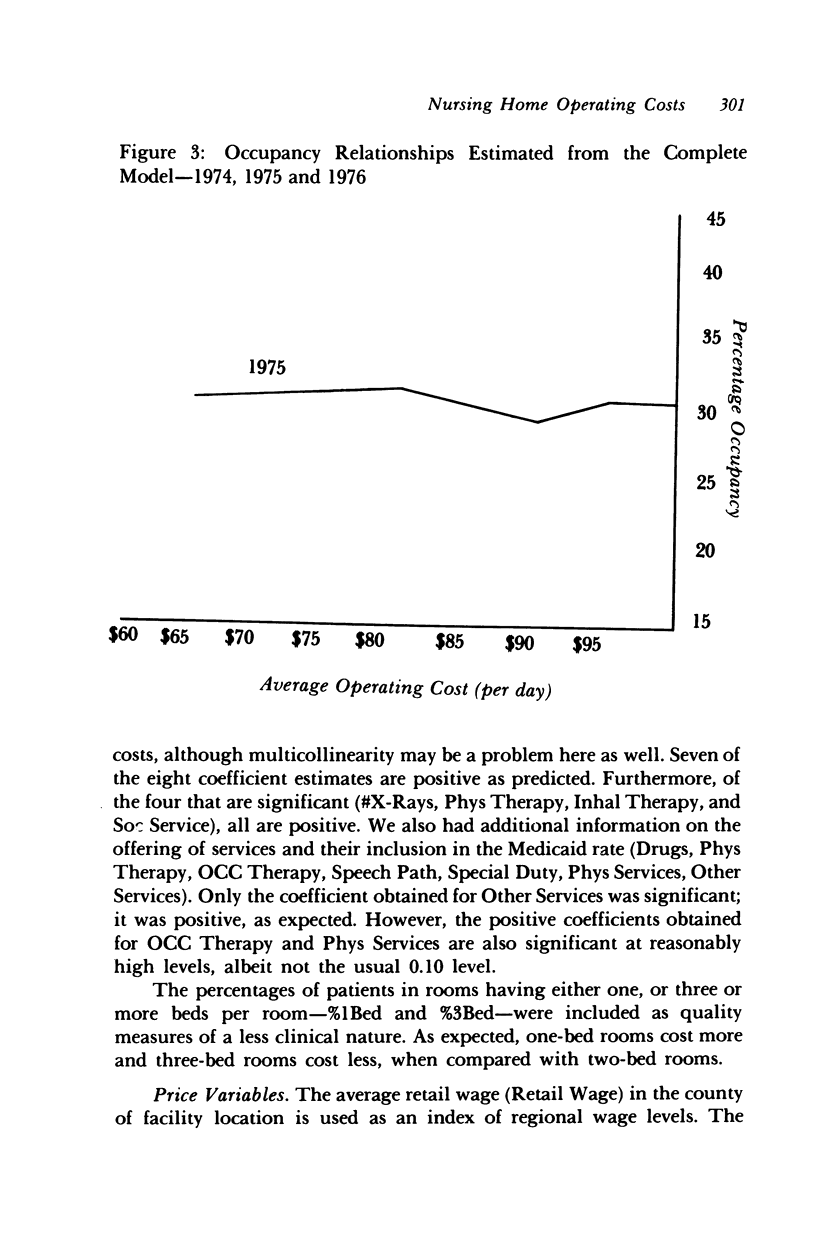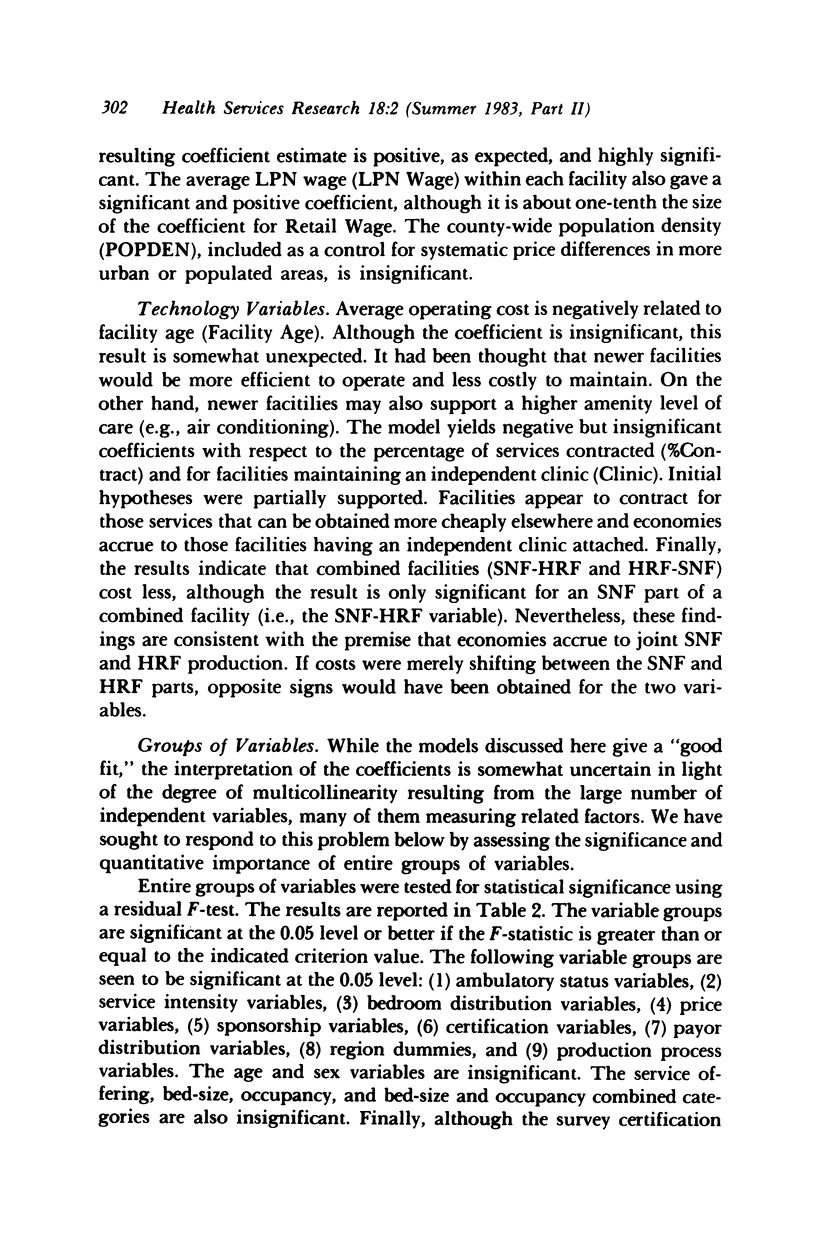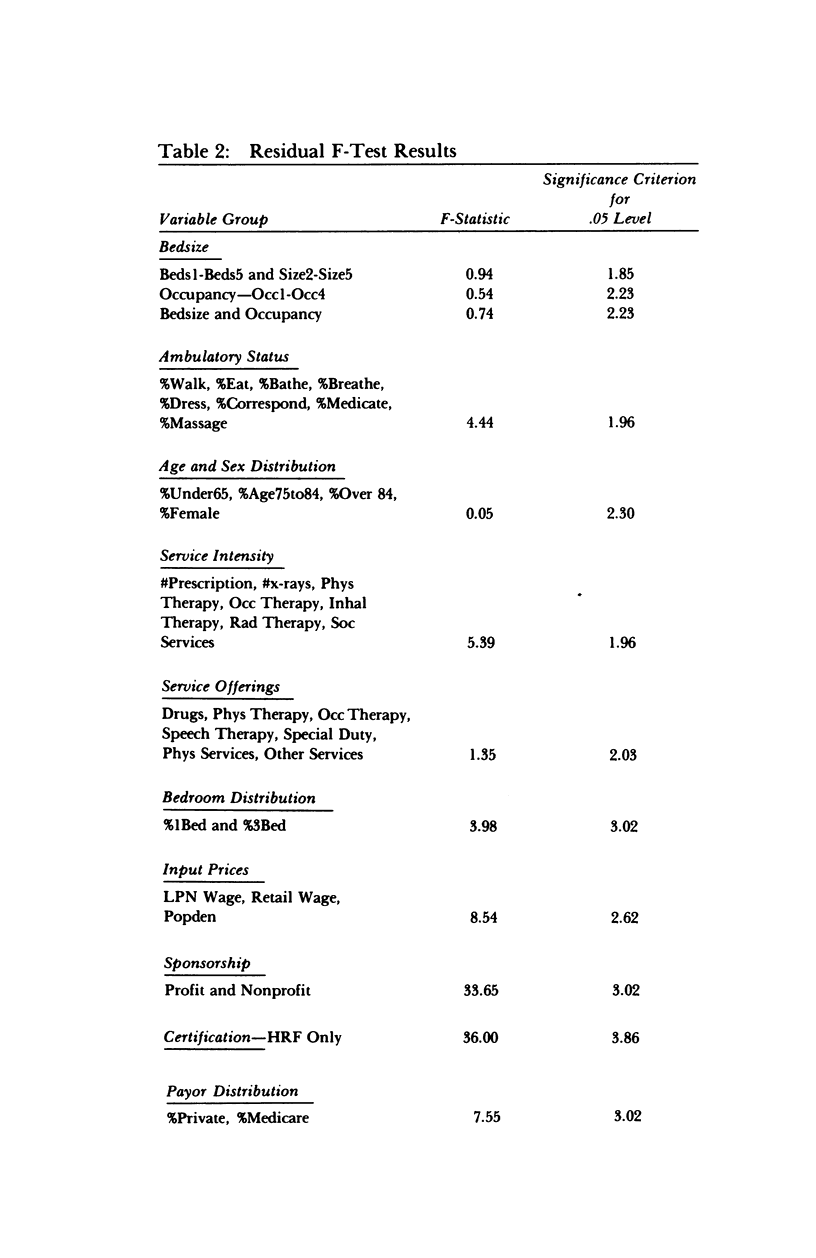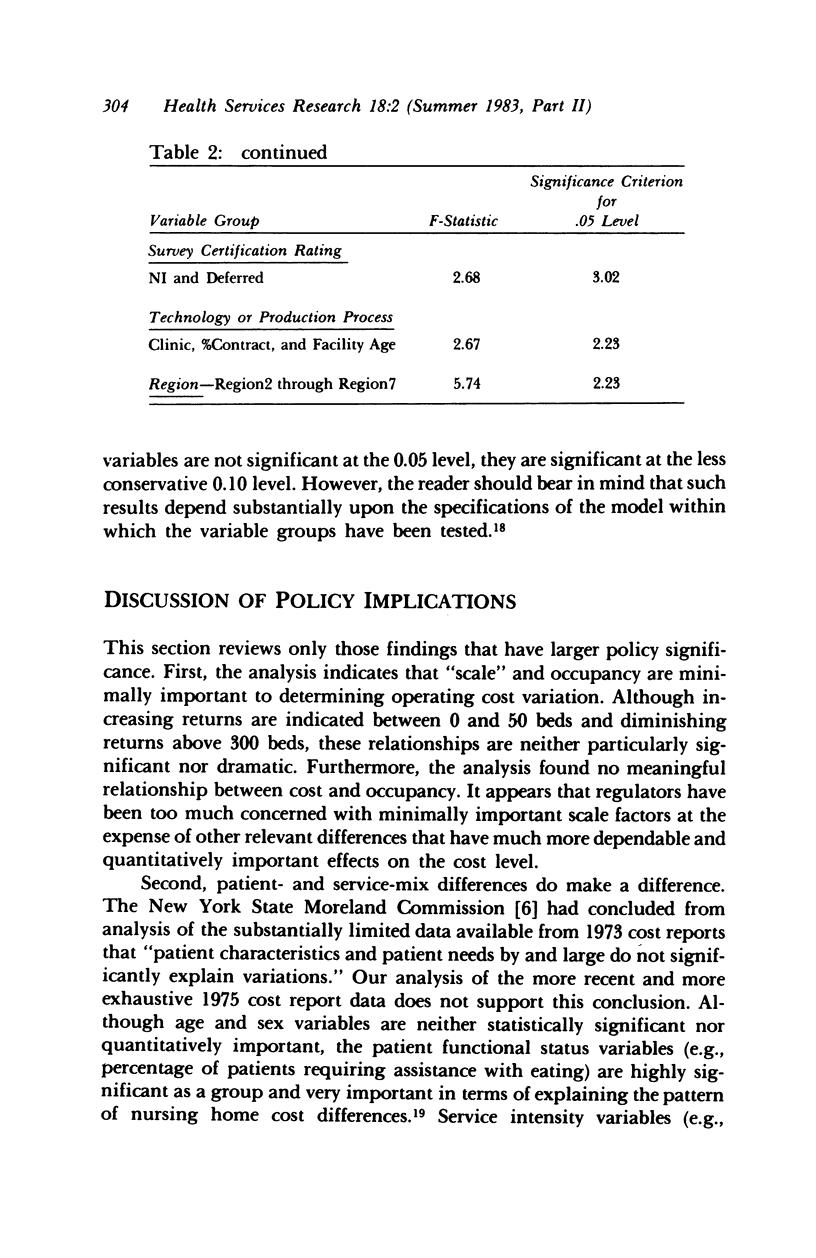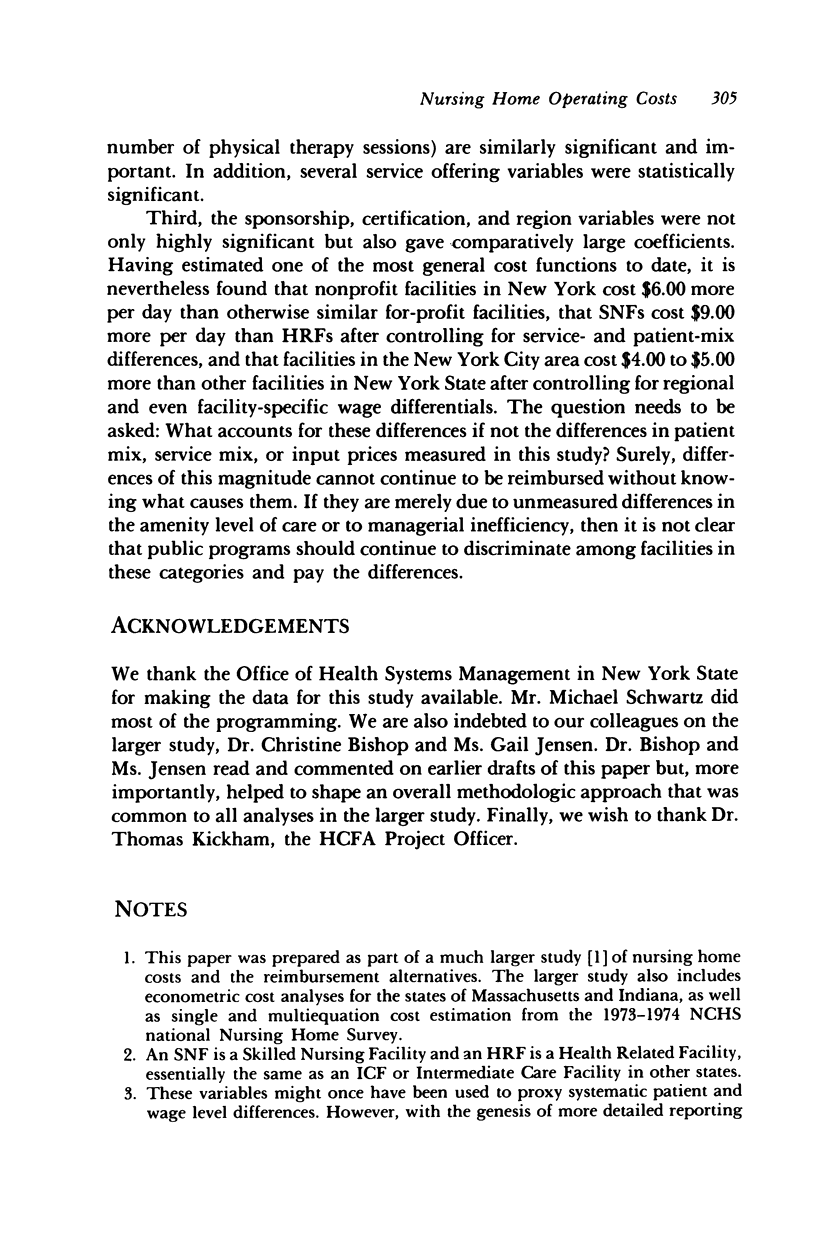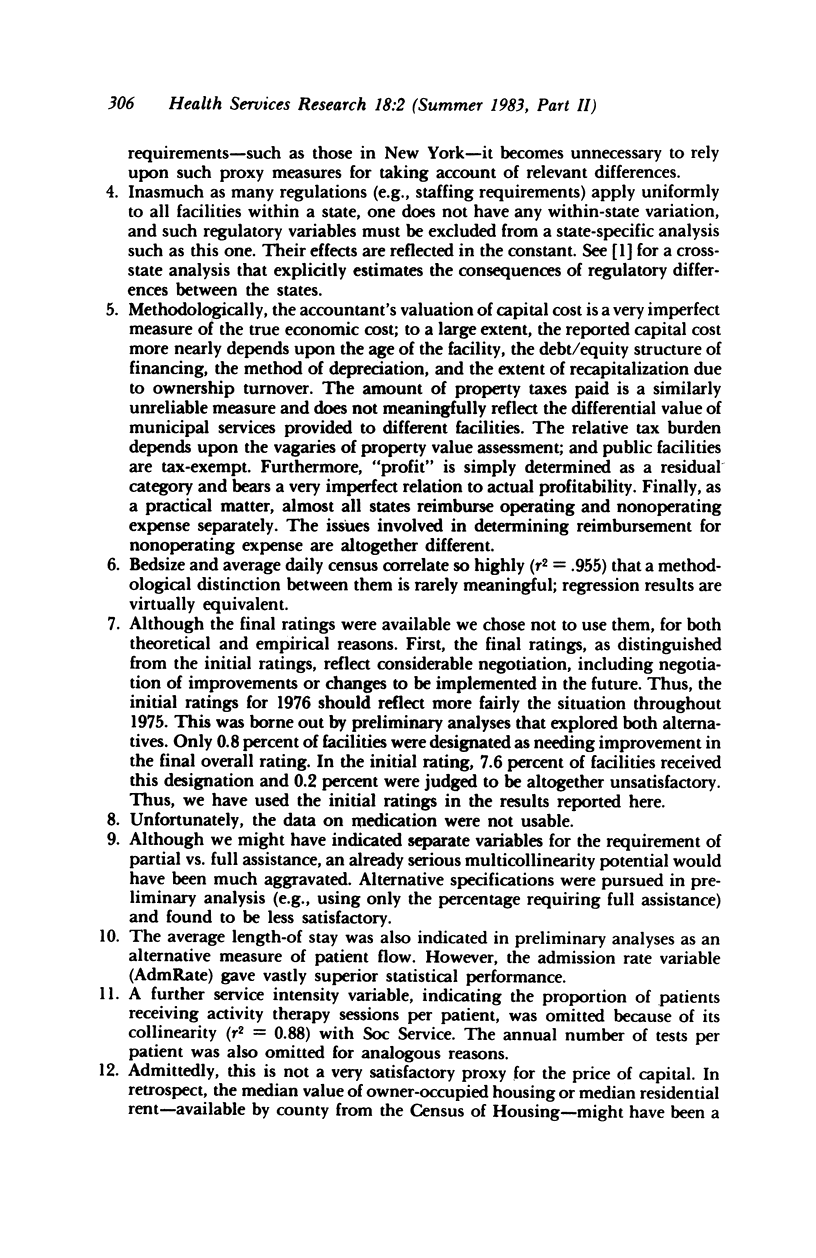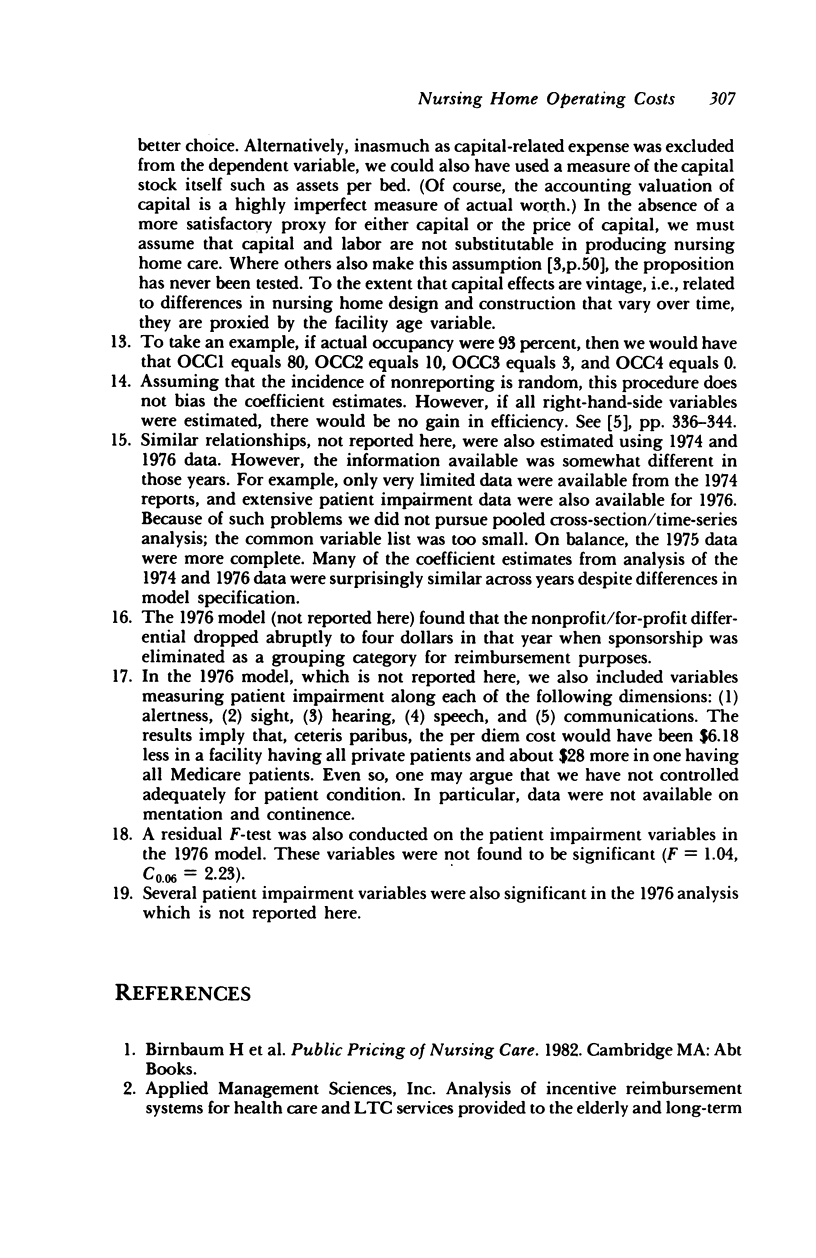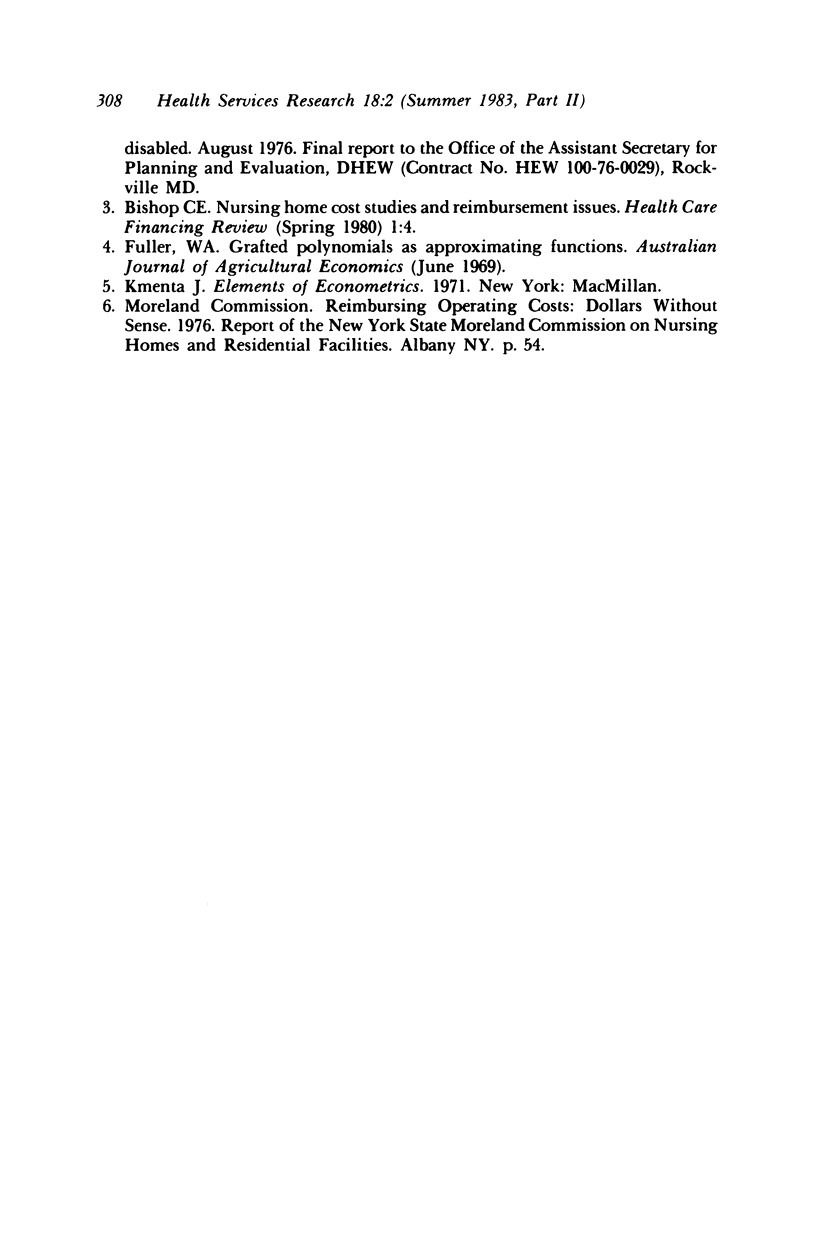Abstract
This paper investigates the determinants of nursing home operating costs in the State of New York during 1975. The analysis indicates that "scale" and occupancy are minimally important in determining operating cost variation. In contrast with other studies, patient- and service-mix differences are found to be important, although reimbursement grouping variables (e.g., profit/nonprofit) remain the most significant and important variables. Having estimated one of the most general cost functions to date, the authors ask what accounts for these differences if not differences in the patient mix, service mix, or input prices. If the differences are merely due to unmeasured differences in the amenity level of care or to managerial inefficiency, then it is not clear that public programs should continue to discriminate between facilities in these categories and pay the differences.
Full text
PDF